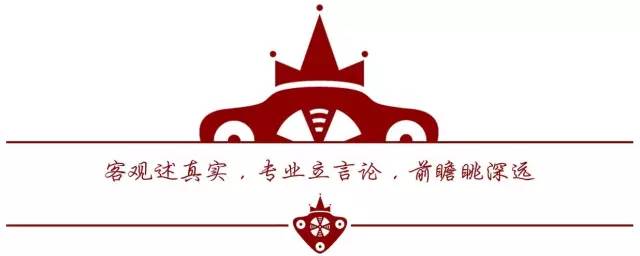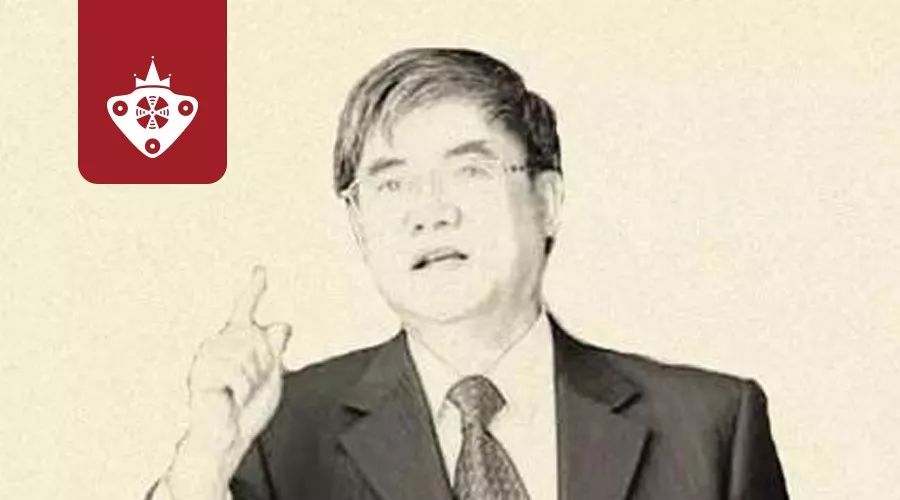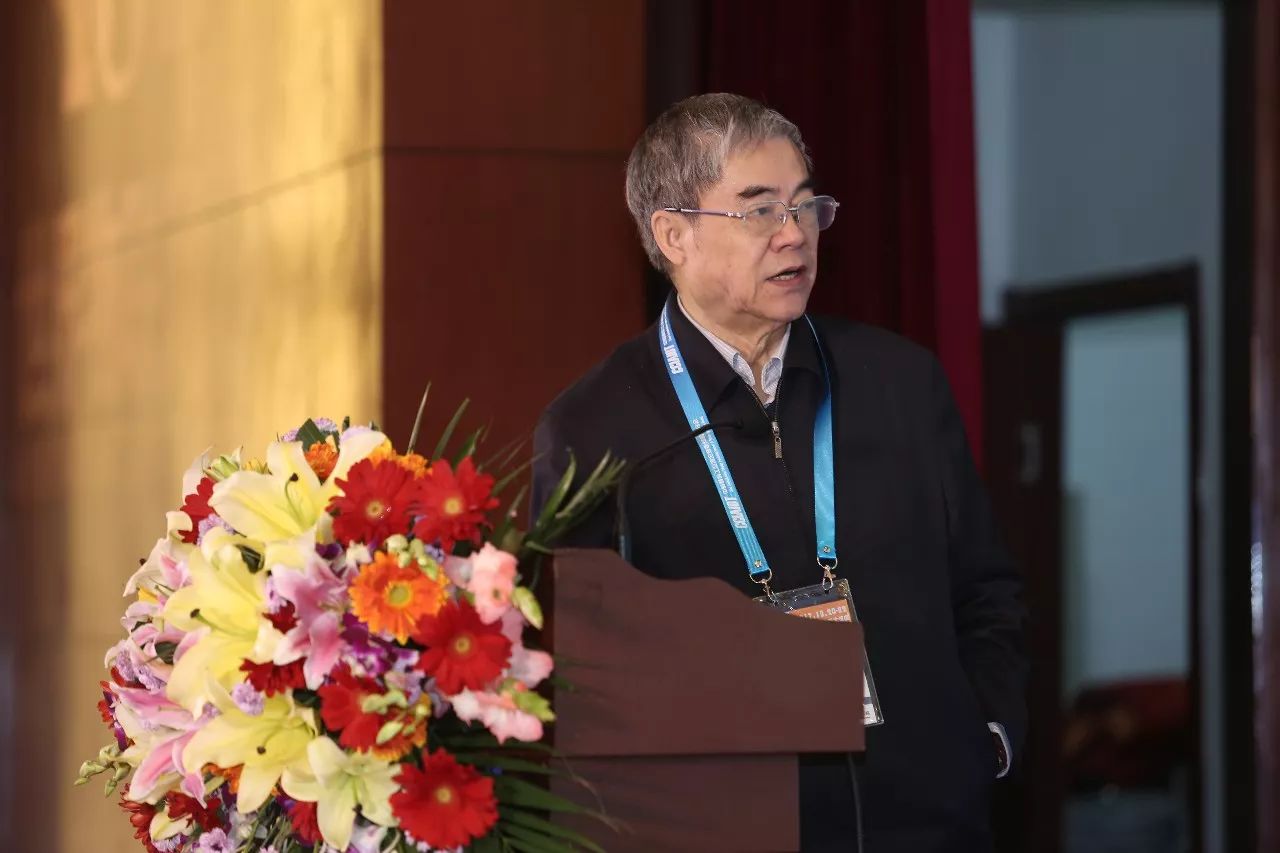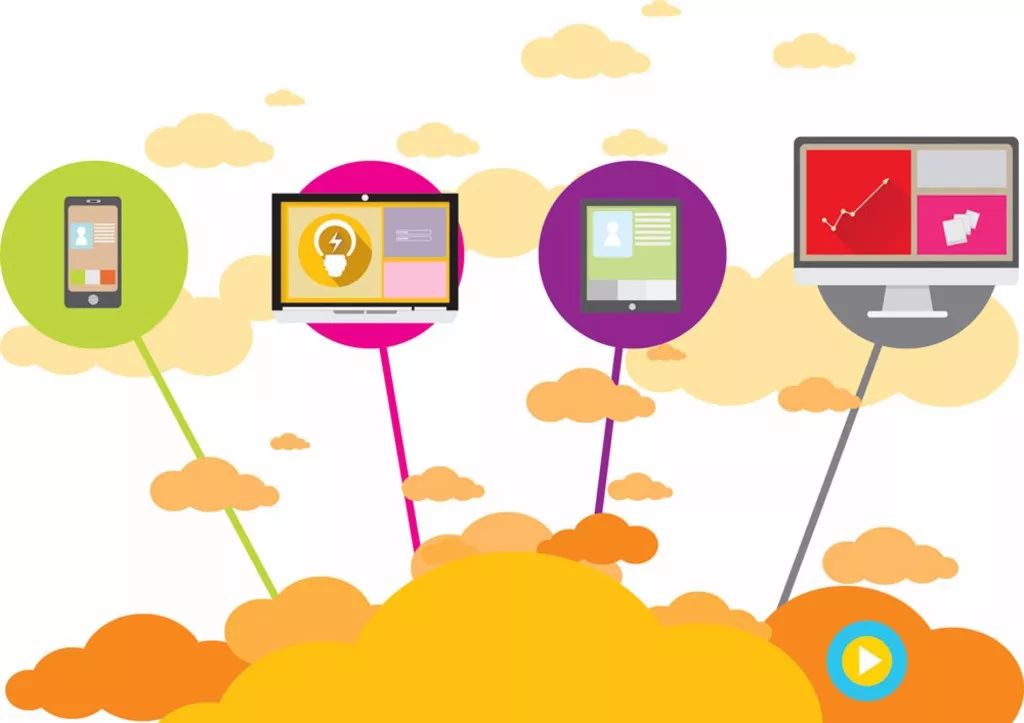
Compiled from Wu Hequan’s speech
IoT Think Tank, compiled and published
Please indicate the source and origin when reprinting
—— [Introduction] ——
The Internet of Things (IoT) is an important feature of informationization in the new era, and the Industrial Internet of Things (IIoT) is the most important direction for future IoT applications, serving as a necessary support for the Internet + advanced manufacturing.

On December 20, 2017, the 8th China Internet of Things Industry and Smart City Development Annual Conference was grandly held in Beijing. This annual conference is a grand event for the development of the domestic IoT industry and smart cities, inviting leaders from nearly twenty ministries and commissions such as the Ministry of Industry and Information Technology, the National Development and Reform Commission, and the Ministry of Housing and Urban-Rural Development, along with domestic authoritative experts, to analyze the main issues affecting the industry’s development and various policy opportunities for promoting industry development on-site. It aims to create a favorable environment for the rapid development of IoT enterprises, thereby promoting the rational, pragmatic, healthy, and orderly development of China’s IoT industry and smart city construction.
The IoT Think Tank has compiled the key points from Academician Wu Hequan’s report, with the theme of his speech being “Technologies and Prospects of the Industrial Internet of Things”. The following is the compiled content:

The Industrial IoT is the process of enterprise informatization. We have experienced electronic processes, digital management, automated production, and now the internetization and intelligentization of enterprises. It can be seen that the Industrial IoT is currently in the stage of enterprise internetization. The transition from the Internet to the Industrial Internet itself is a progress, and now the transition from IoT to IIoT is also a progress.
The components of the IoT can be divided into four major parts:
-
Hardware terminals, responsible for information collection;
-
Communication services, serving as the transmission layer;
-
Cloud platforms;
-
Software systems;
These four parts account for the following proportions in the IoT industry chain: hardware terminals account for 5%, communication services account for 10%, platform services account for 10%, and software development and integration value-added services account for the largest portion, at 55%. (In Academician Wu’s view, data processing consists of two parts: one is the platform, and the other is the software system.)
First Part: Hardware Terminals
Academician Wu Hequan emphasized that the Industrial IoT is a network with sensing and monitoring capabilities, encompassing domestic collection control sensors, control devices, ubiquitous technology, mobile communication, and intelligent analysis technologies, continuously integrating into various aspects of the industrial production process, significantly improving manufacturing efficiency, enhancing product quality, reducing product costs, and resource consumption, ultimately achieving a new stage of intelligentization for traditional industries. What we previously discussed about the IoT, namely IoT, can be understood as IT plus OT, which is information technology and operational technology.
Regarding the differences between IoT and IIoT, he proposed the following six points:
-
IoT is currently aimed at social applications, while IIoT is aimed at industrial applications;
-
IoT involves social infrastructure, while IIoT involves enterprise assets;
-
IoT does not have high requirements for electromagnetic interference, real-time performance, and security, while IIoT needs to consider strong electromagnetic interference and has high requirements for real-time performance and security;
-
IoT focuses on services, while IIoT focuses on production efficiency;
-
IoT is operated and managed by the government or owners, while IIoT is operated and managed by enterprises.
In addition, Academician Wu also mentioned that there are a large number of sensors in IIoT. If we think traditionally, we might believe that using a CNC lathe to process workpieces is quite scientific. In reality, the material of the workpiece changes over time and temperature, so the truly scientific method is to utilize sensors to monitor the condition of the workpiece in real-time and provide feedback to modify the CNC program. Currently, the third major application area for sensors is industrial, with mobile phones and automobiles ranking ahead of industrial applications. In the future, it is expected that industrial applications will surpass mobile phones and automobiles to become the most important application area for sensors. In the industrial field, there are various types of sensors, including flow sensors, pressure sensors, and temperature sensors, which account for 21%, 19%, and 14% of industrial sensors, respectively, making them the three most prominent sensor types. However, due to the variety and low volume, their performance appears relatively fragmented, which also affects the cost reduction of industrial sensors.
Second Part: Communication Services

Having sensors only generates messages; collecting messages requires intelligent instruments, on-site instruments, distributed control systems (DCS), field control systems (FCS), and programmable logic controllers (PLC) to gather relevant data. This data collection process occurs through a bus, which connects to the monitoring and data acquisition system, along with various databases in the backend.
When discussing the communication technology of IIoT, Academician Wu mentioned fieldbus, industrial Ethernet, and narrowband IoT. He stated that the reason IIoT did not develop well in previous years was due to the lack of good communication technology to support its rapid development.
The earliest communication technology for IIoT was fieldbus, which played a certain role, but due to the excessive number of standards and chaos, standardization has not been achieved. Later, Ethernet developed, which, although traditional, is cost-effective. In industrial applications, due to the numerous nodes, relying on listening methods results in poor real-time performance. Therefore, in the transition from Ethernet to industrial Ethernet, three main aspects were addressed to solve the problems of traditional Ethernet, including improving transmission speed, synchronization, and changing the calling system from a listening-based system. However, industrial Ethernet also faces the issue of multiple standards, as manufacturers often prioritize their own interests, leading to incompatibility among various standards.
Regarding narrowband IoT, there are both unlicensed spectrum-based technologies and licensed spectrum-based technologies. In terms of licensed spectrum, the NB-IoT standard was completed in 2016, along with the eMTC technology that runs parallel to it. In the future, there will be a new air interface for eMTC based on 5G, which is for massive machine-type communication. eMTC is expected to be available around 2018, operating at a frequency of 6.5G, with a maximum known rate of 260 bits per second, a latency of about 10 seconds, and the ability to support one million connections per square kilometer, with a battery life expectation of 10 to 15 years. In addition to these licensed spectrums, 3GPP is also researching unlicensed spectrum, with future developments leading to 5G.
In IIoT scenarios, adaptive frequency modulation, high-precision time synchronization, network segmentation encryption, anomaly monitoring and alarms, and network access authentication are primarily employed. Both NB-IoT and eMTC use multi-carrier methods, transmitting multiple channels on a designated carrier frequency. NB-IoT operates with a single carrier in the uplink and OFDMA in the downlink, which offers advantages such as wide coverage, large connections, low power consumption, and low cost, making it suitable for low-throughput areas where latency is not a concern, such as remote metering and smart parking. In the future, NB-IoT will add positioning capabilities and wired communication. Meanwhile, eMTC can operate in the same frequency band as LTE, with resources uniformly allocated by the base station, enhancing coverage through simultaneous transmission of uplink and downlink data, and also features wide coverage, large connections, low power consumption, and low cost. It has a relatively high rate and mobility, mainly for machine-to-machine communication, logistics tracking, wearables, and smart healthcare. In the future, eMTC bandwidth will be very narrow, even narrower than NB-IoT.
Third Part: Data Processing
The IoT cloud platform encompasses data analysis, cloud technology, etc. Generally speaking, it corresponds to different levels of cloud computing. Typically, we can purchase PaaS provided by large software companies in the market, which may also include IaaS, but there are rarely universal SaaS layers. Because different industries and enterprises cannot use the same SaaS, companies providing PaaS, such as GE and SAP, often do PaaS and also create open interfaces on PaaS to accommodate various SaaS. For traditional manufacturing companies like IBM and GE, they usually only provide SaaS without PaaS, so often an IIoT platform needs to span several industrial software providers.
Additionally, traditional cloud computing platforms are centralized, which has its advantages for intensive utilization, but also presents certain issues. Because all data is sent to the cloud platform, distance-related problems such as latency and reliability naturally arise. Security is also a major issue for IIoT. The IIoT is always online; although it is not connected to external networks, physical isolation may still be exposed to external viruses due to management negligence. MIT Technology Review listed the top ten breakthrough technologies of the year, and the zombie IoT was one of them. Once IIoT encounters security issues, the impact is immeasurable, so stricter security protection technologies need to be adopted. For example, real-time network performance monitoring and early warning technologies, distributed sensing technologies for industrial data, preventing unauthorized entity identification, tracking, and access, decentralized authentication and experimental models, energy-efficient encryption data protection, and heterogeneous privacy protection.
According to McKinsey data, currently, 30% of IoT industry spending is in the B2B sector. Academician Wu indicated that in the future, this will be reversed, with B2B expected to account for 70% of all spending, and by 2020, manufacturing will be the primary application field for IIoT.
The Three Major Challenges of IIoT
From the previous description, the lack of interoperability standards and security are two of the major issues facing IIoT. In addition, the issue of ownership of industrial data is also a significant challenge that IIoT must overcome. Currently, there is no conclusion in the market; once your equipment is sold to users, it is unclear whether the data collected by the device belongs to the manufacturer or the user. We lack professional technical personnel who understand both IT technology and enterprise processes. Therefore, we need to build bridges between IIoT technology and product providers and vertical industry application providers, requiring solutions tailored to different industries and enterprises.
Money Cannot Buy IIoT
The IoT is an important feature of informationization in the new era, and the IIoT is the most important direction for future IoT applications, serving as a necessary support for the Internet + advanced manufacturing. The IIoT involves industrial internet and IoT, as well as industrial production operations technology, integrating microelectronics, computing technology, communication technology, cloud platforms, and big data technology, representing a new development area of information technology. The IIoT itself is also a large industry, contributing significantly to economic development. Overall, China’s IIoT is still in its infancy, with particular attention needed for independent innovation and cybersecurity.

Previous Hot Articles (Click the title to read directly):
-
“The Technology Content of Shared Bicycles Explained in One Article!”
-
“How to Explain What a Wireless Communication Module Is to an ‘IoT Novice’?”
-
“[Heavyweight] Comprehensive Report on the IoT Industry, the First to Open the Domestic IoT Industry Two-Dimensional Perspective Panorama“
-
“A Cartoon Explains: Besides WiFi and Bluetooth, What Can the Recently Hot NB-IoT Do?“
-
“A Cartoon Explains: What Is LoRa That Everyone Is Talking About Behind NB-IoT?“
